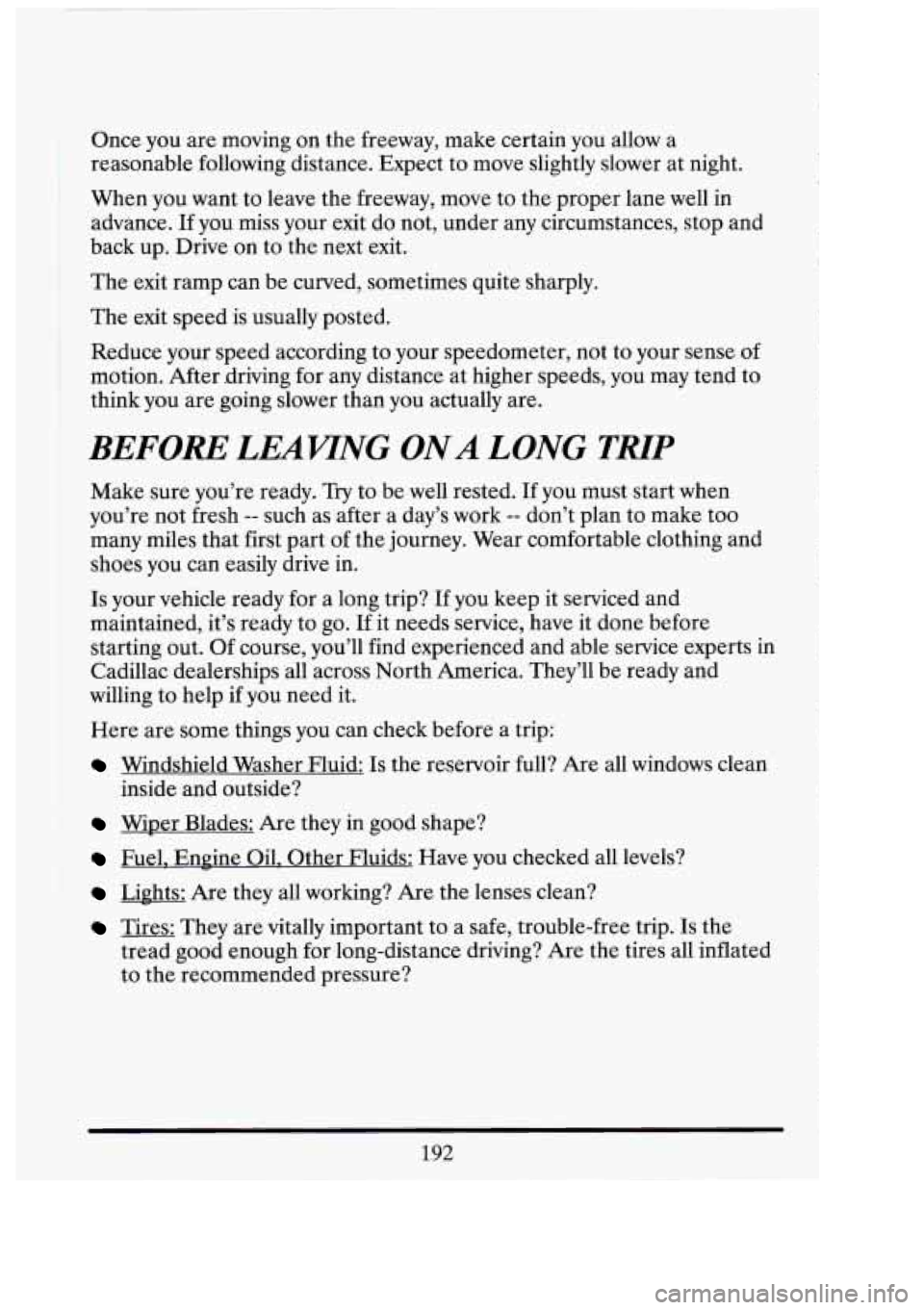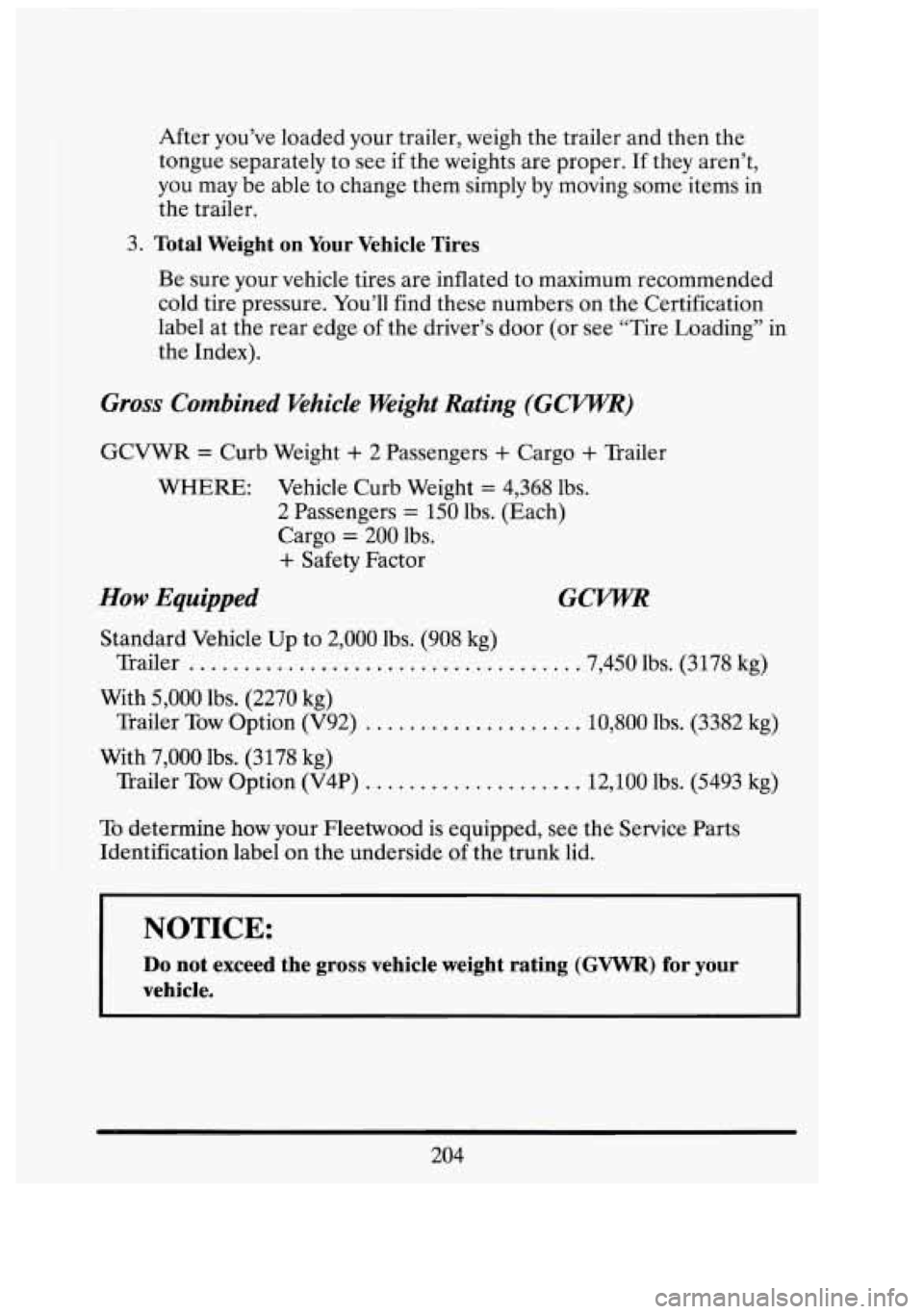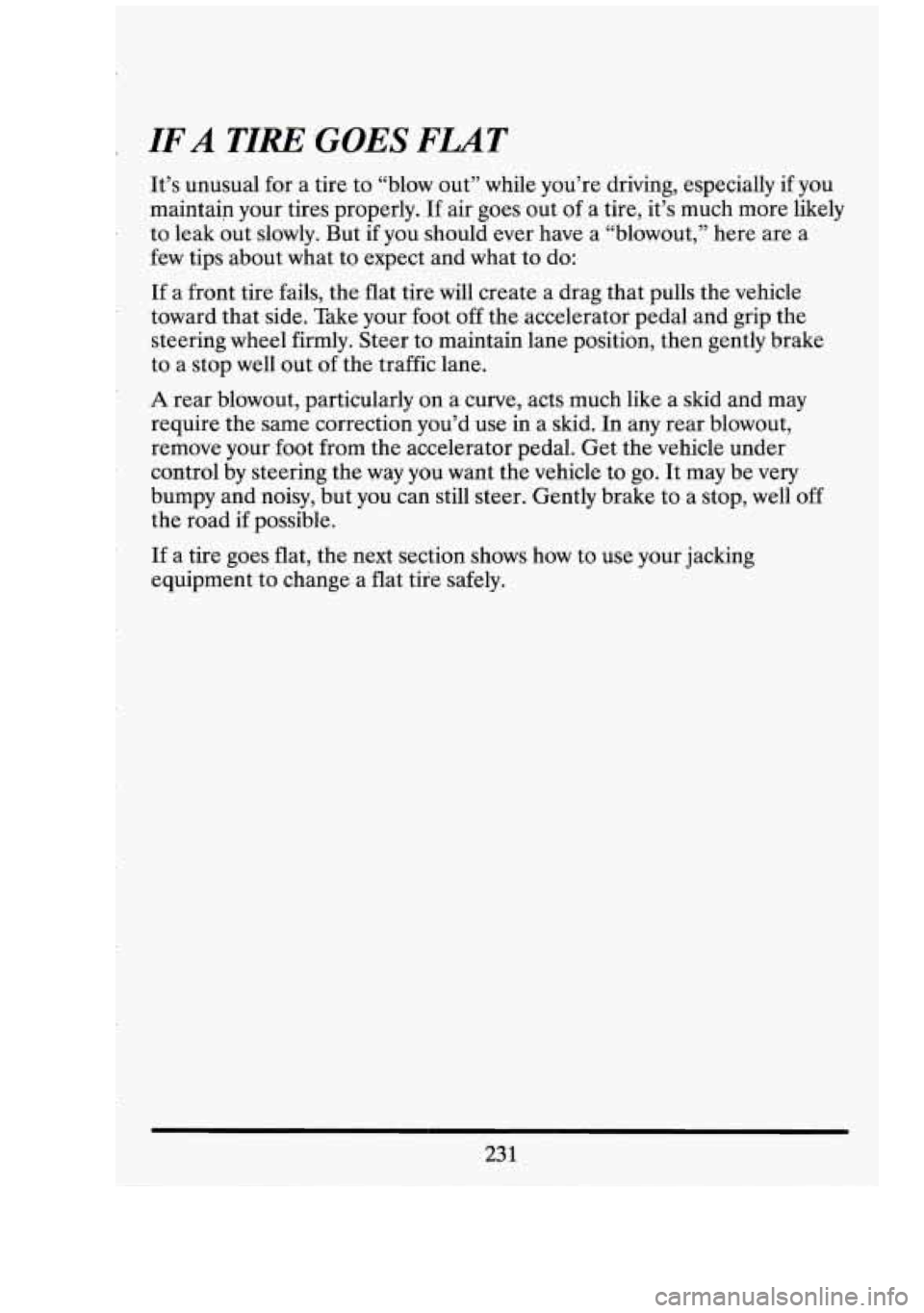Page 12 of 398

This Cadillac Manual is divided into major sections.
Introduction - How to Use this Manual .......................... lrn
This section tells you how to use your manual and includes
safety and vehicle damage warnings and symbols.
- Section 1 - Seats and Restraint Systems ..........................
This section tells you how to use your seats and safety
belts properly. It also explains the
“SIR” system.
Section 2 - Features and Controls ..............................
This section explains how to start and operate your Cadillac.
67
Section 3 - Comfort Controls and Audio Systems ................ 146 1-1
This section tells you how to adjust the ventilation and
comfort controls and how to operate your sound system.
Section 4 -Your Driving and the Road ......................... 166
Here you’ll find helpful information and tips about the
road and how to drive under different conditions.
-
Section 5 - Problems on the Road ............................. 212
This section tells you what to do if you have a problem
while driving, such as a flat tire, or engine overheating, etc.
Section 6 - Service and Appearance Care ....................... 245 n
Here the manual tells you how to keep your Cadillac
running properly and looking good.
For more information on “Reporting Safety Defects”, see Owner
Assistance, Page
5.
:d?irst Edition
Page 205 of 398

I
Once you are moving on the freeway, make certain you allow a
reasonable following distance. Expect to move slightly slower at night.
When you want to leave the freeway, move to the proper lane well in
advance.
If you miss your exit do not, under any circumstances, stop and
back up. Drive on to the next exit.
The exit ramp can be curved, sometimes quite sharply.
The exit speed is usually posted.
Reduce your speed according to your speedometer, not to your sense of
motion. After driving for any distance at higher speeds, you may tend to
think you are going slower than you actually are.
BEFORE LEAWNG ONA LONG TMP
Make sure you’re ready. Try to be well rested. If you must start when
you’re not fresh
-- such as after a day’s work -- don’t plan to make too
many,miles that first part of the journey. Wear comfortable clothing and
shoes you can easily drive in.
Is your vehicle ready for a long.trip? If you keep it serviced and
maintained, it’s ready to go.
If it needs service, have it done before
starting out. Of course, you’ll find experienced and able service experts
in
Cadillac dealerships all across North America. They’ll be ready and
willing to help if you need it.
Here are some things you can check before a trip:
Windshield Washer Fluid: Is the reservoir full? Are all windows clean
Wiper Blades: Are they in good shape?
Fuel, EnEine Oil. Other Fluids: Have you checked all levels?
Lights: Are they all working? Are the lenses clean?
inside
and outside?
Tires: They are vitally important to a safe, trouble-free trip. Is the
tread good enough for long-distance driving?
Are the tires all inflated
to the recommended pressure?
Ql
cl‘ I
GI
192
Page 207 of 398
HILL AND MOUNTMN ROADS
Driving on steep hills or mountains is different from driving in flat or
rolling terrain.
If you drive regularly in steep country, or if you’re planning to visit there,
here are some tips that can make your trips safer and more enjoyable.
0 Keep your vehicle in good shape. Check all fluid levels and also the
brakes, tires, cooling system and transmission. These parts can work
hard on mountain roads.
Know how to go down hills. The most important thing to know is this:
let your engine do some
of the slowing down. Shift to a lower gear
when you go down a steep or long hill.
194
13
I
Page 217 of 398

I I
31 i
After you’ve loaded your trailer, weigh the trailer and then the
tongue separately to see if the weights are proper. If they aren’t,
you may be able to change them simply by moving some items in
the trailer.
3.
Total Weight on Your Vehicle Tires
Be sure your vehicle tires are inflated to maximum recommended
cold tire pressure. You’ll find these numbers on the Certification
label at the rear edge
of the driver’s door (or see “Tire Loading’’ in
the Index).
Gross Combined Vehicle Weight Rating (GCvmC)
GCVWR = Curb Weight + 2 Passengers + Cargo + Trailer
WHERE: Vehicle Curb Weight
= 4,368 lbs.
2 Passengers = 150 lbs. (Each)
Cargo
= 200 lbs.
+ Safety Factor
How Equipped GCWR
Standard Vehicle Up to 2,000 lbs. (908 kg)
With 5,000 lbs. (2270 kg)
With 7,000 lbs. (3178 kg) Trailer
................................... .7,450
lbs. (3178 kg)
Trailer Tow Option (V92)
.................... 10,800 lbs. (3382 kg)
Trailer Tow Option (V4P)
.................... 12,100 lbs. (5493 kg)
To determine how your Fleetwood is equipped, see the Service Parts
Identification label on the underside
of the trunk lid.
EI
nl
n I
NOTICE:
Do not exceed the gross vehicle weight rating (GVWR) for your
vehicle.
I I -
204
Page 244 of 398

r IF A TIREGOES FLAT
It’s unusual for a tire to “blow out” while you’re driving, especially if you
maintain your tires properly. If air goes out of a tire, it’s much more likely
to leak out slowly. But
if you should ever have a “blowout,” here are a
few tips about what to expect and what to do:
If a front tire fails, the flat tire will create a drag that pulls the vehicle
toward that side. Take your foot off the accelerator pedal and grip the
steering wheel firmly. Steer to maintain lane position, then gently brake
to a stop well out of the traffic lane.
A rear blowout, particularly on a curve, acts much like a skid and may
require the same correction you’d use in a skid. In any rear blowout,
remove your foot from the accelerator pedal. Get the vehicle under
control by steering the way you want the vehicle to
go. It may be very
bumpy and noisy, but you can still steer. Gently brake to a stop, well off
the road
if possible.
If a tire goes flat, the next section shows how to use your jacking
equipment to change a flat tire safely.
231
Page 245 of 398
> 2 L- "- " -
^', If a tire goes.flat, avoid farther tire and wheel damage bv driving slowly to
,' a level place. Turn on your hazard warning flashers.
Page 247 of 398
-1 L-
I
Rear Fender Skirt
If the flat tire is at the rear wheel, you have to remove the fender skirt
first.
- To unlock the fender
skirt, locate the
handles inside the
fender skirt. Push the
handles up and inward,
and then pull them
down. Gently remove
the skirt by pulling it
toward you. Place it to
one side.
Use the flat end of the
wheel wrench. Insert
into the small slot
on
the wheel and gently
remove the center
cover. Be careful not
to drop the cover on
the ground,
you could
scratch it.
234
nl
I
qi il
Page 249 of 398
NOTICE:
Raising your vehicle with the jack improperly positioned will
damage the vehicle or may allow the vehicle to fall
off the jack.
Be sure to fit the jack lift head into the proper location before
raising your vehicle.
Raise the vehicle by rotating the wheel wrench clockwise. Raise the
vehicle far enough off the ground
so there is enough room for the spare
tire to fit.
Remove the wheel nuts
.and take off the flat tire.
236
-1
I